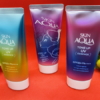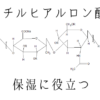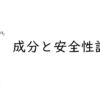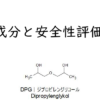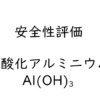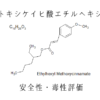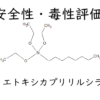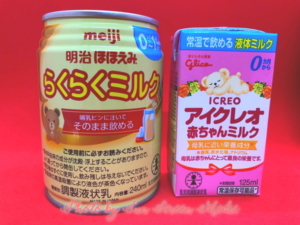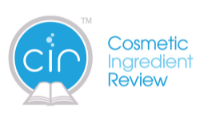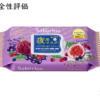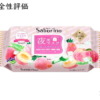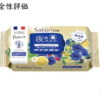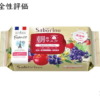イソステアリン酸は危険性はほぼない|日焼け止めの成分チェック
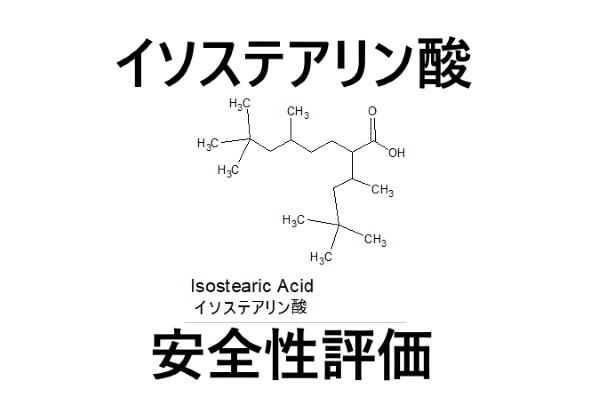
イソステアリン酸は化粧品の基剤・乳化剤として利用されているもので、オレイン酸のような脂肪酸に近い脂肪酸です。皮膚刺激性は低く、基本的に安全ですが、経口摂取を控え、目に入れてしまわないように気をつけましょう。個人差がありますが、敏感肌の方は、イソステアリン酸が多い化粧品で肌荒れを起こす可能性がありますので、ご注意ください。
イソステアリン酸の性質
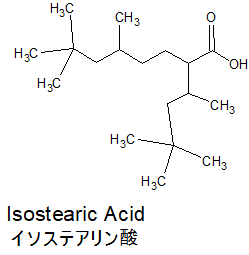
化粧品などによく含まれている「イソステアリン酸」は、分子式C18H36O2、分子量284.48のカルボン酸系の高級脂肪酸(常温で液体)です。別名ヘプタデカン-8-カルボン酸、または、2-ヘプチルウンデカン酸とも呼ばれており、沸点は183度くらい、比重は0,88 g/cm3です。
- 2,2,4,8,10,10-Hexamethylundecane-5-carboxylic Acid
- 2,2,4,8,10,10-ヘキサメチルウンデカン-5-カルボン酸
- Isostearic Acid
- CAS:54680-48-7
乳化剤として添加されることが多く、安定していて、化粧品の安定剤、サブの基剤として利用できます。
安全性・リスク評価
For C5–14 fatty acids, branched and unbranched isomers had similar effects. One branched C18 fatty acid isomer (C16-branched isostearic acid) was more effective in enhancing skin penetration than a differently branched (C2-branched isostearic acid) or unbranched C18 isomer (stearic acid).
引用:https://link.springer.com/article/10.1023/A:1015921702258
【翻訳】C5-14脂肪酸の場合、分岐異性体と非分岐異性体は同様の効果がありました。1つの分岐C18脂肪酸異性体(C16分岐イソステアリン酸)は、別の分岐(C2分岐イソステアリン酸)または非分岐C18異性体(ステアリン酸)よりも皮膚浸透の強化に効果的でした。
このことからイソステアリン酸とその分岐の異なる同種のものも皮膚からの浸透性能を高めるのに役立ってくれる、逆を言えば、物質によっては皮膚に浸透して刺激を生む可能性があるということも考えられます。メリットになるか、デメリットになるか、これは一緒に配合されている成分によって変わります。
以下の出典の記述によると、イソステアリン酸の配合濃度は、5%~10%ほどだそうです。
【各種毒性の可能性】
Oral toxicity
The acute oral toxicity of lsostearic Acid was evaluated in three studies on the undiluted ingredient ( 29-31 and two studies on product formulations containing the ingredient.(32.33) Ineach study, young adult albino rats were fasted overnight and administered a single dose of the undiluted ingredient or product formulation by gastric intubation. They were then allowed free access to food and water for two weeks. The results and other details of these studies are summarized in Table 4. From these data, the acute oral LD50 of lsostearic Acid in rats is between 32 and 64 ml/kg.出典:https://journals.sagepub.com/doi/pdf/10.3109/10915818309142002
【翻訳】イソステアリン酸の急性経口毒性は、希釈されていない成分に関する3つの研究(29-31およびその成分を含む製品処方に関する2つの研究)で評価されました。各研究では、若い成体アルビノラットを一晩絶食させ、単回投与しました これらの研究の結果およびその他の詳細は、表4にまとめられています。これらのデータから、ラットにおけるイソステアリン酸の急性経口LD50 32~64 ml/kgの間です。
心配するほどのことはありません。LD50を見てみても、半数致死率を超えるほどの経口摂取は難しいでしょう。
Primary skin irritation and phototoxicity
The potentials for primary skin irritation caused by undiluted lsostearic acid 15% lsostearic Acid in corn oil and three product formulations containing lsostearic Acid were evaluated using the Draize rabbit skin patch test technique. In each study, 0.5 ml samples were applied and occluded for 24 h, after which time the patch sites were graded for erythema and edema on the
Draize scale. The results and other details of these studies are summarized in Table 5. The undiluted ingredient produced minimal irritation of the rabbit skin, whereas no irritation was noted when it was diluted to 15% in corn oil. Product formulations containing lsostearic Acid produced minimal to moderate skin irritation, most probably by virtue of the other ingredients present in the formulations.
In a primary skin irritation and phototoxicity test, 200 mg of 100% lsostearic Acid was applied to the dorsal surface of New Zealand rabbits. The test material was applied for 2 h under gauze atches to 1-in’skin areas on both the left- and right-hand sides. The patch on the right-hand side was removed and exposed to 5×107 ergs/cm2 black light (320-450 nm). The nonirradiated areas were shielded with aluminum foil during the light exposure. A positive Oxsoralen control was treated in a similar manner. The investigators concluded that the test material was mildly irritating without light exposure and only moderately irritating following light exposure. The investigator reported that a statistically significant difference was not detected between the nonirradiated and radiated sites.出典:https://journals.sagepub.com/doi/pdf/10.3109/10915818309142002
【翻訳】トウモロコシ油中の未希釈のイソステアリン酸15%イソステアリン酸と、イソステアリン酸を含む3つの製品製剤によって引き起こされる一次皮膚刺激の可能性を、(ドレイズ試験)ウサギの皮膚パッチテスト技法を使用して評価しました。各試験では、0.5 mlのサンプルを適用して24時間閉塞し、その後パッチ部位の紅斑と浮腫についてグレード分けしました。
これらの研究の結果とその他の詳細を表5にまとめます。未希釈の成分はウサギの皮膚に最小限の刺激をもたらしましたが、コーン油で15%に希釈した場合、刺激は認められませんでした。イソステアリン酸を含む製品配合物は、おそらく配合物中に存在する他の成分のおかげで、最小限から中程度の皮膚刺激を引き起こした。
主要な皮膚刺激性と光毒性試験では、100 mgのイソステアリン酸200 mgがニュージーランドのウサギの背部表面に塗布されました。試験材料をガーゼの下で2時間、皮膚の左側と右側の両方にある1インチの皮膚領域に塗布した。右側のパッチを取り外し、5×107 ergs/cm2のブラックライト(320-450 nm)にさらしました。非照射領域は、露光の間、アルミホイルで遮蔽された。陽性のオキソラレン対照を同様の方法で治療した。研究者らは、試験物質は、光への曝露なしでは穏やかな刺激性があり、光への曝露後は中程度の刺激性であると結論付けた。調査員は、非照射部位と照射部位の間に統計的に有意な差は検出されなかったと報告しました。
ウサギの肌での実験ですが、イソステアリン酸を塗った肌に紫外線(320-450 nm)を照射したら、中程度の刺激が起こる可能性があるということがわかりました。敏感肌の方は他の化粧品や日焼け止めとの組み合わせによって、また、飲酒後次の日の日焼け止め使用、肌荒れ中の日焼け止めの使用で、肌刺激を受ける可能性があります。
Eye irritation
The Draize rabbit eye irritation procedure or a modification of the test was used to evaluate undiluted lsostearic Acid and four product formulations containing lsostearic Acid. In each study, a 0.1 ml sample was instilled into the conjunctival sacof one eye of each rabbit with no washing; the untreated eye served as a control. Treated eyes were examined and graded on the Draize eye irritation scale at 1, 2, 3, 4, and 7 days. The results and other details of these studies are summarized in Table 6. The undiluted ingredient produced only minimal eye irritation which cleared by 24 h. Some of the product formulations produced moderate eye irritation, which is greater than that produced by the ingredient alone.出典:https://journals.sagepub.com/doi/pdf/10.3109/10915818309142002
【翻訳】ドレイズ法のウサギの目の刺激手順またはテストの変更を使用して、希釈されていないイソステアリン酸とイソステアリン酸を含む4つの製品製剤を評価しました。 各研究では、0.1 mlのサンプルを、洗浄せずに各ウサギの片方の結膜嚢に滴下しました。 未処理の目を対照とした。 治療した眼を検査し、1、2、3、4、および7日目にドレイズ試験・眼刺激性スケールで等級付けしました。 これらの研究の結果およびその他の詳細を表6にまとめます。未希釈の成分は眼への刺激を最小限に抑え、24時間で解消しました。 一部の製品処方では、中程度の眼の刺激があり、これは成分のみで生成されるものよりも大きい。
はっきりはしませんが、イソステアリン酸が入っている、入っていないに関わらず、たいていの化粧品は目に入れることを想定して作られていません。イソステアリン酸も同様、もし、目に入ってしまっても24時間で刺激性の症状は解消されるようですが、極力、目には化粧品を入れないようにしましょう。
フェイシャル系の化粧品、ファンデーション、日焼け止め付きのファンデーションを使用するときにも間違って目に入れないように注意しましょう。
出典
Chemical Book
https://www.chemicalbook.com/ChemicalProductProperty_JP_CB5161054.htm
東京化成工業株式会社
https://www.tcichemicals.com/JP/ja/p/I0184
Structure/Effect Studies of Fatty Acid Isomers as Skin Penetration Enhancers and Skin Irritants
https://link.springer.com/article/10.1023/A:1015921702258
High resolution 13C NMR study of synthetic branched-chain acids and of wool wax acids and isostearic acid
https://www.sciencedirect.com/science/article/abs/pii/0009308493900499
Isostearic and other branched acids
https://aocs.onlinelibrary.wiley.com/doi/abs/10.1007/BF02667455
Isostearic acid salts as permeation enhancers
https://patents.google.com/patent/US20030018085A1/en
Di- and tripentaerythritol esters of isostearic acid
https://patents.google.com/patent/US4477383A/en
Monomolecular films of mixtures: I. Stearic acid with isostearic acid and with tri-p-cresyl phosphate. Comparison of components with octadecylphosphonic acid and with tri-o-xenyl phosphate
https://www.sciencedirect.com/science/article/abs/pii/0095852254900562
Isostearic acid and isostearic acid derivatives
https://pascal-francis.inist.fr/vibad/index.php?action=getRecordDetail&idt=19343987
CA2071 Isostearic Acid|Safety Data Sheet

